Le Roi Arthus
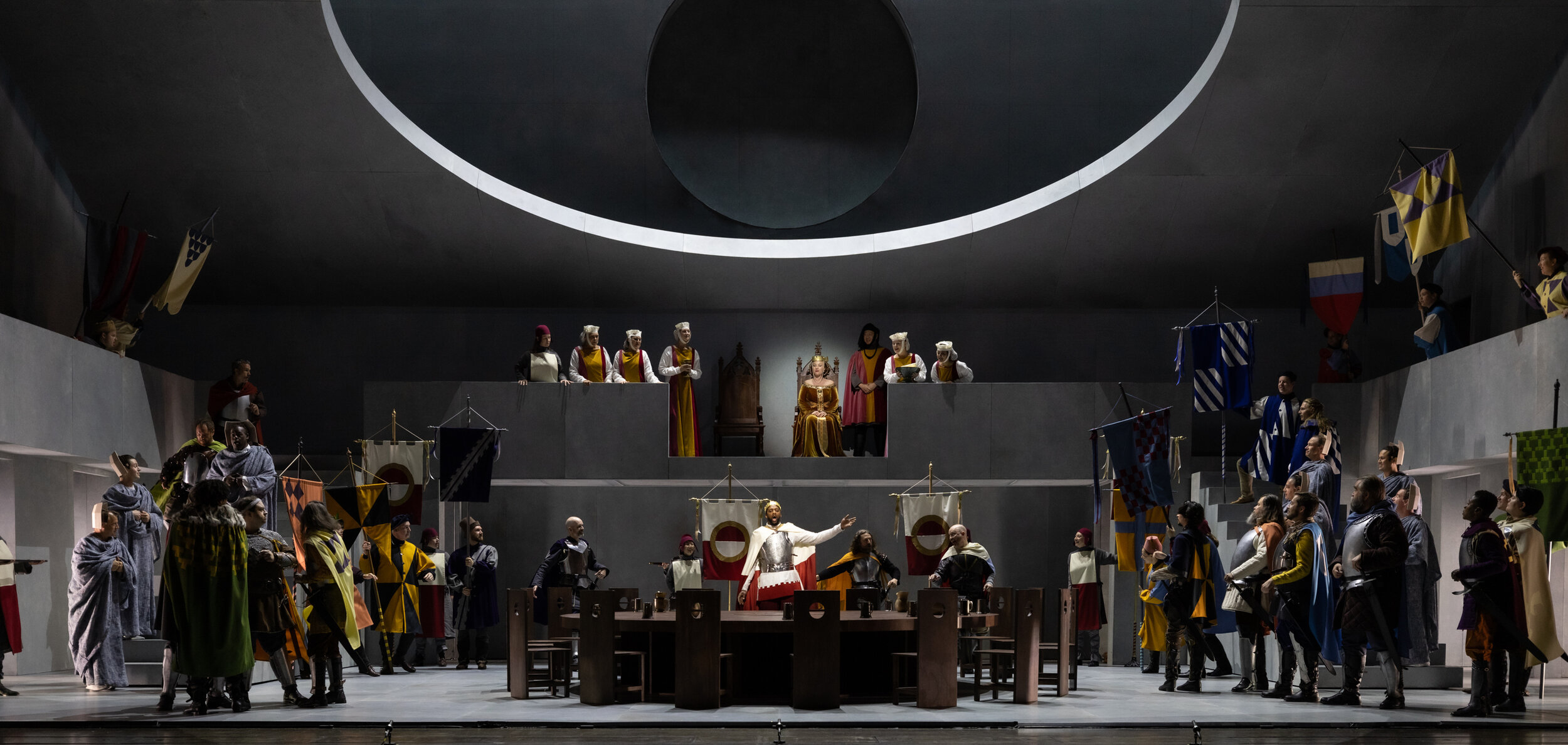
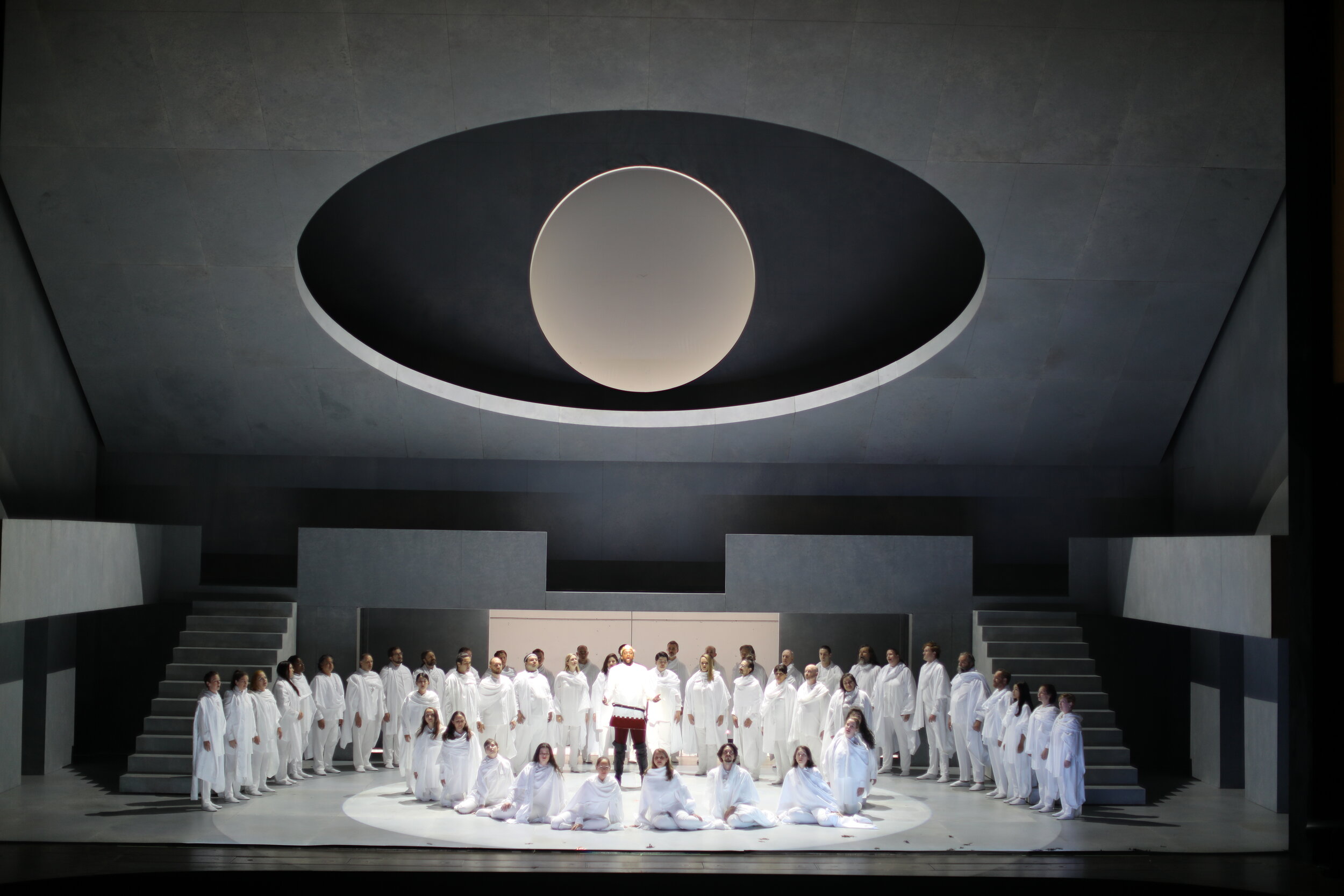
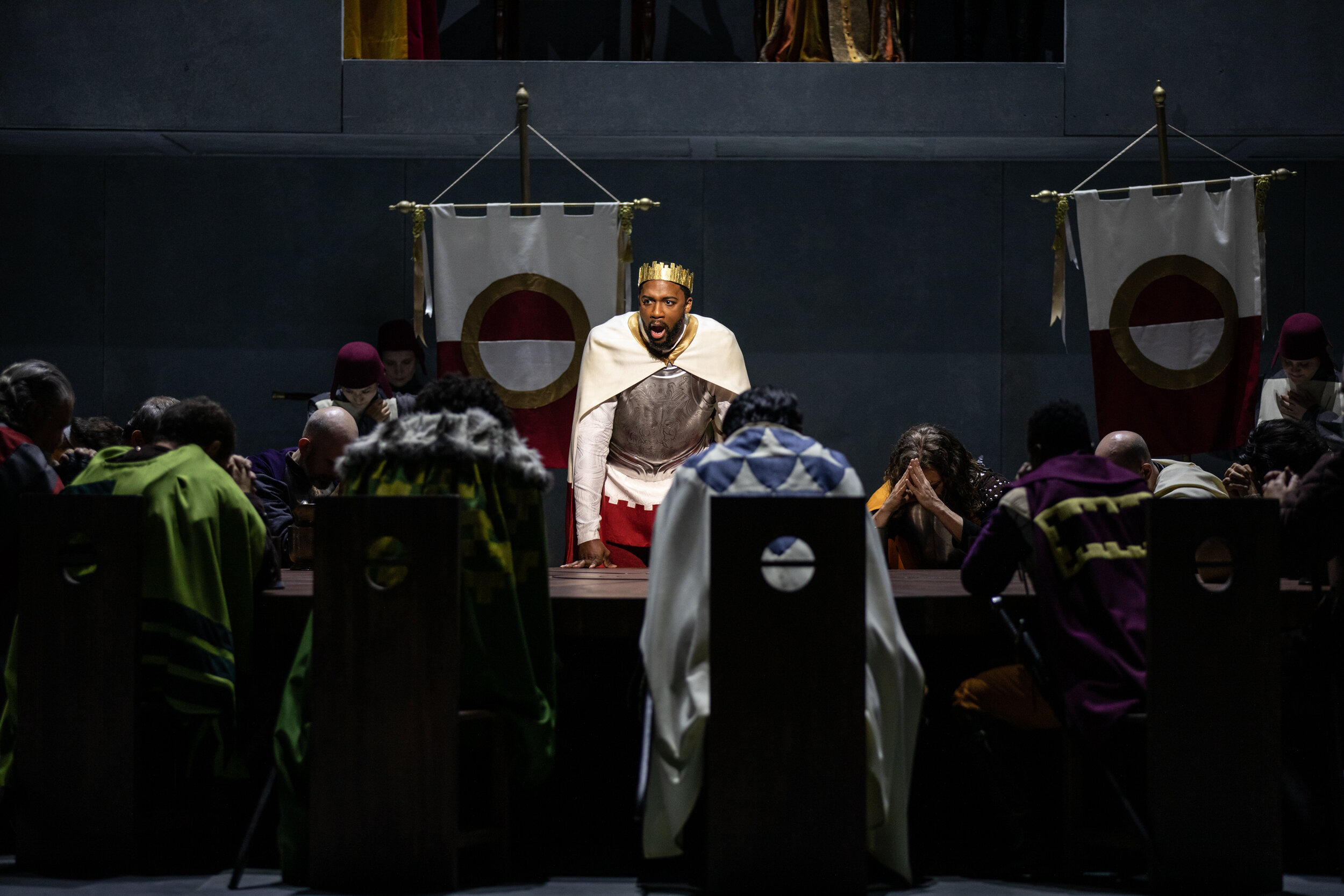
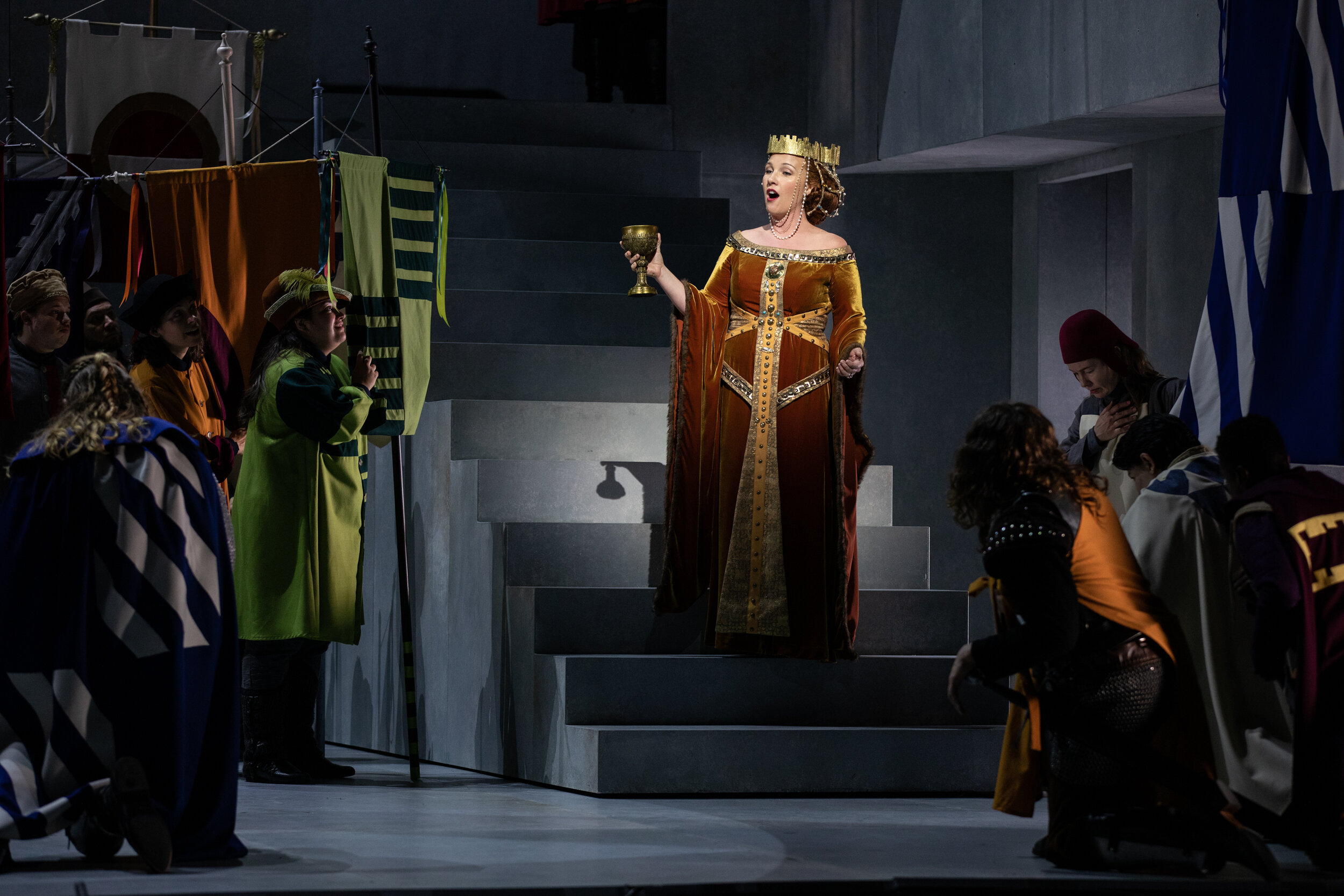

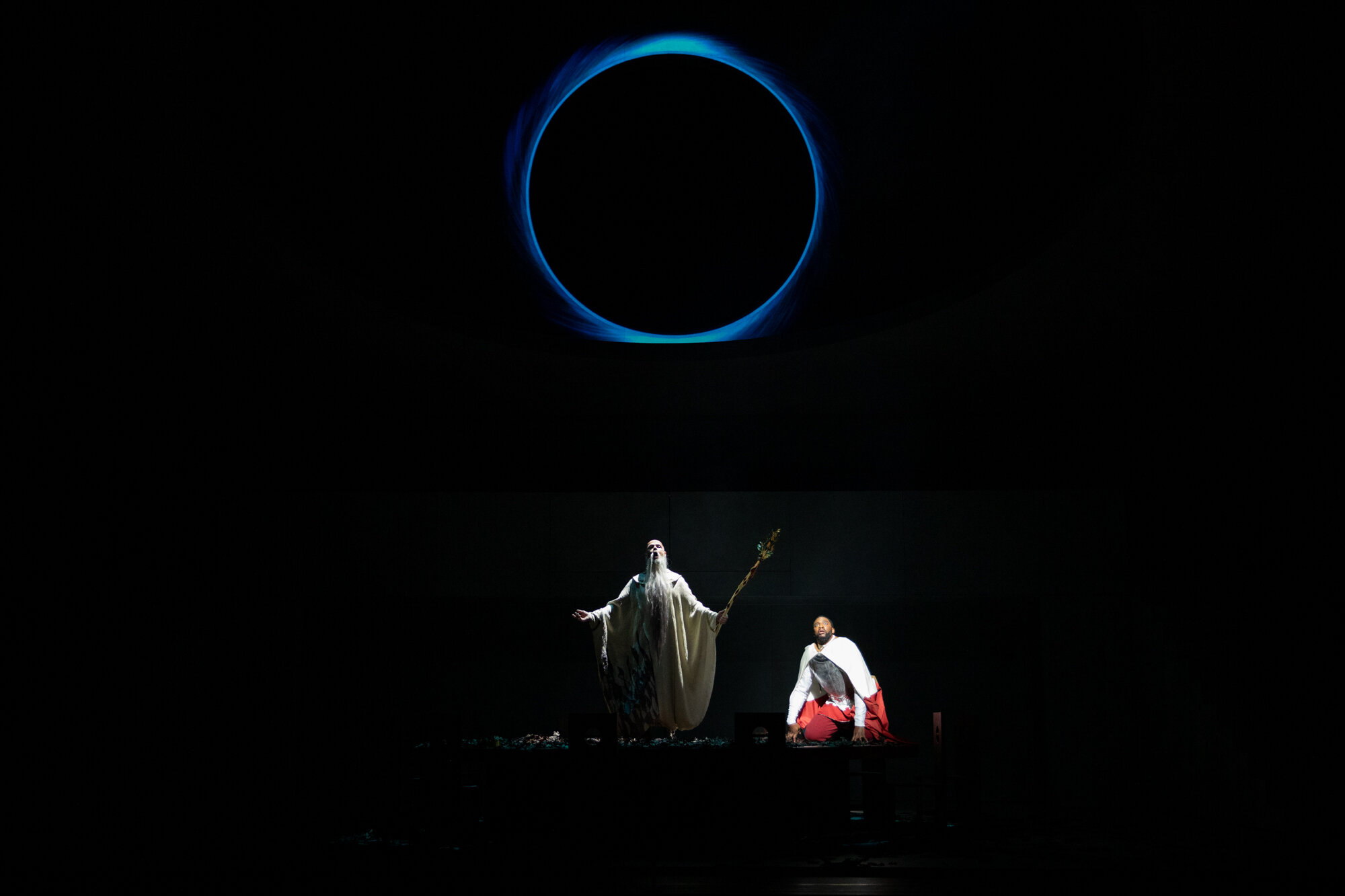
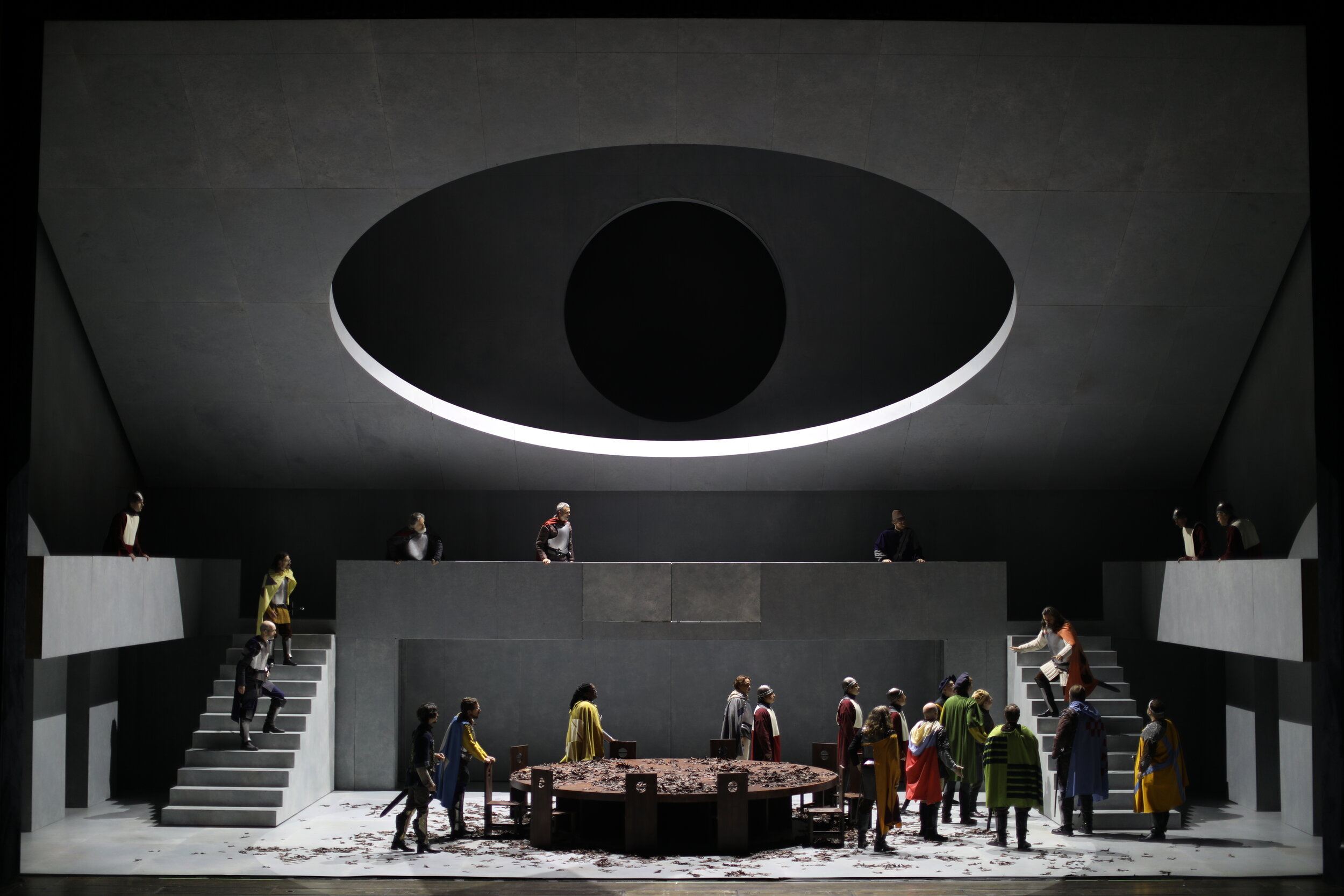
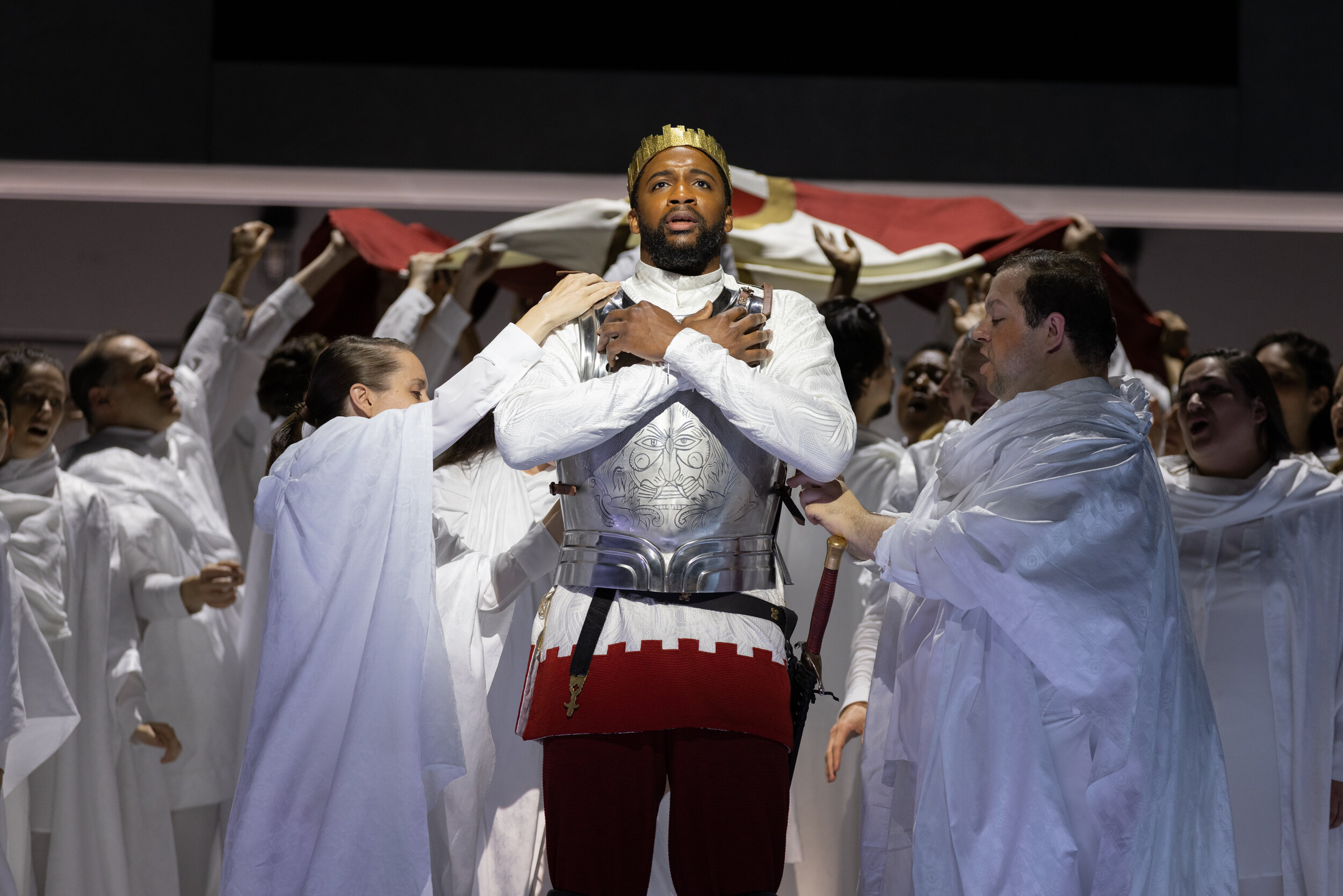
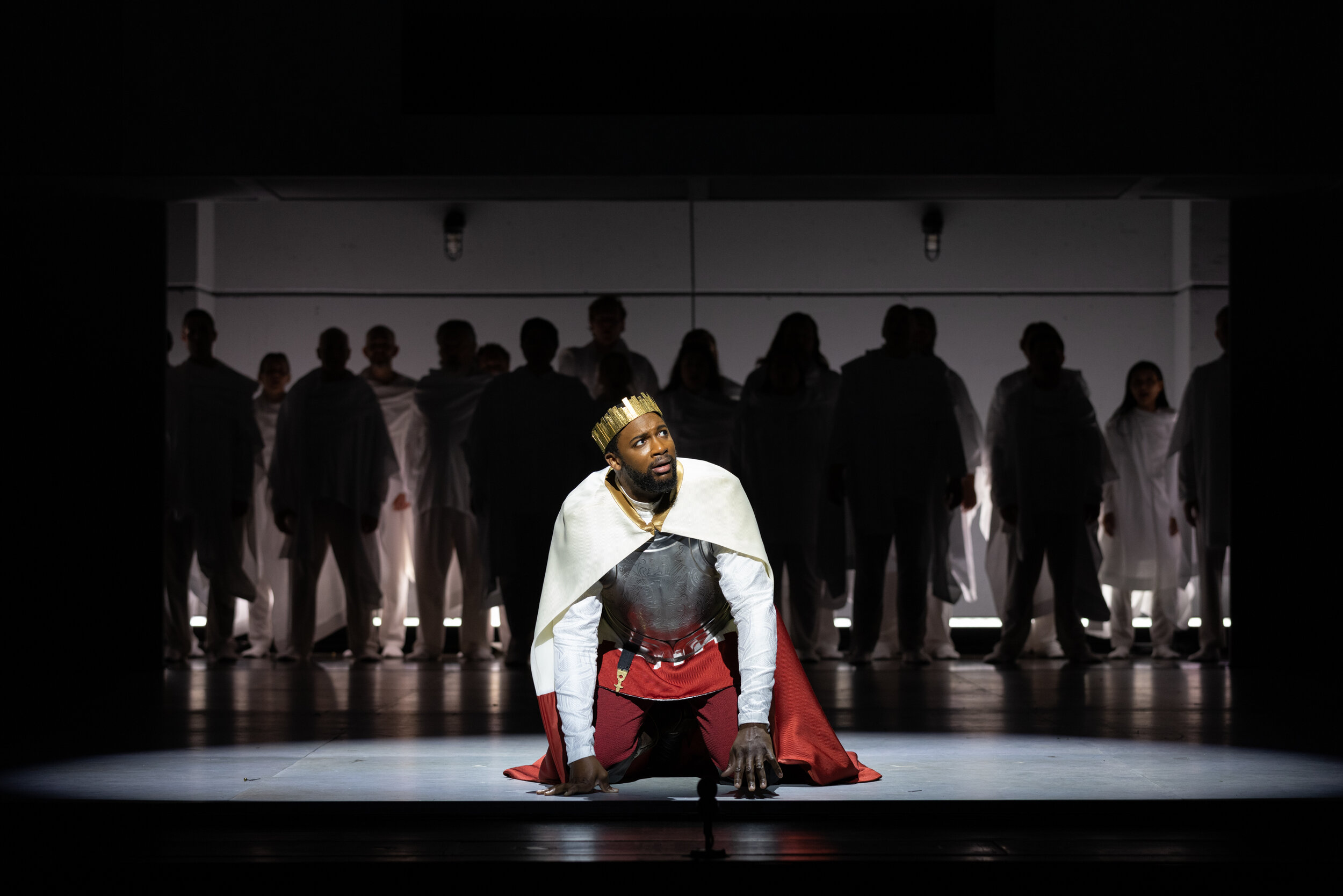
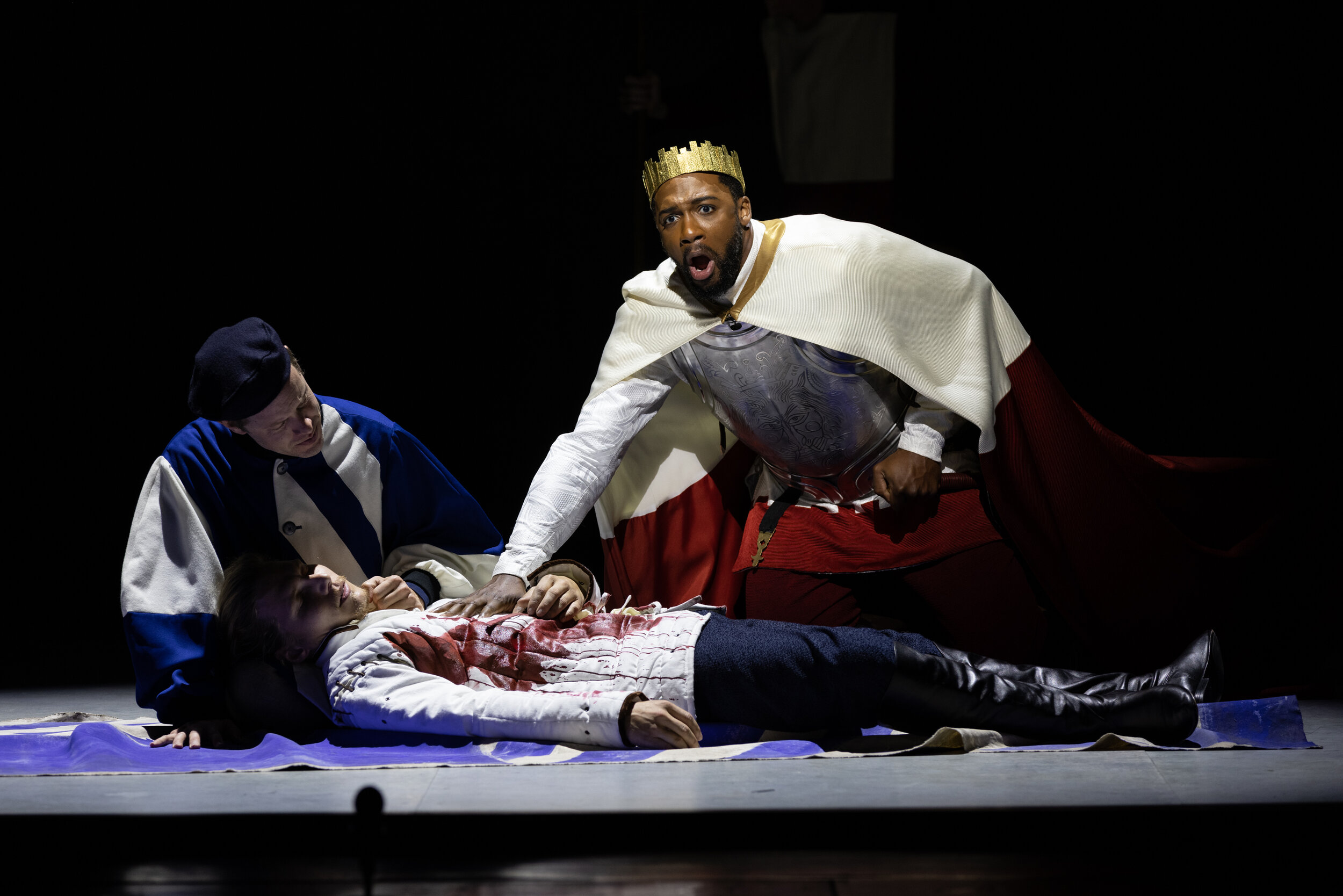
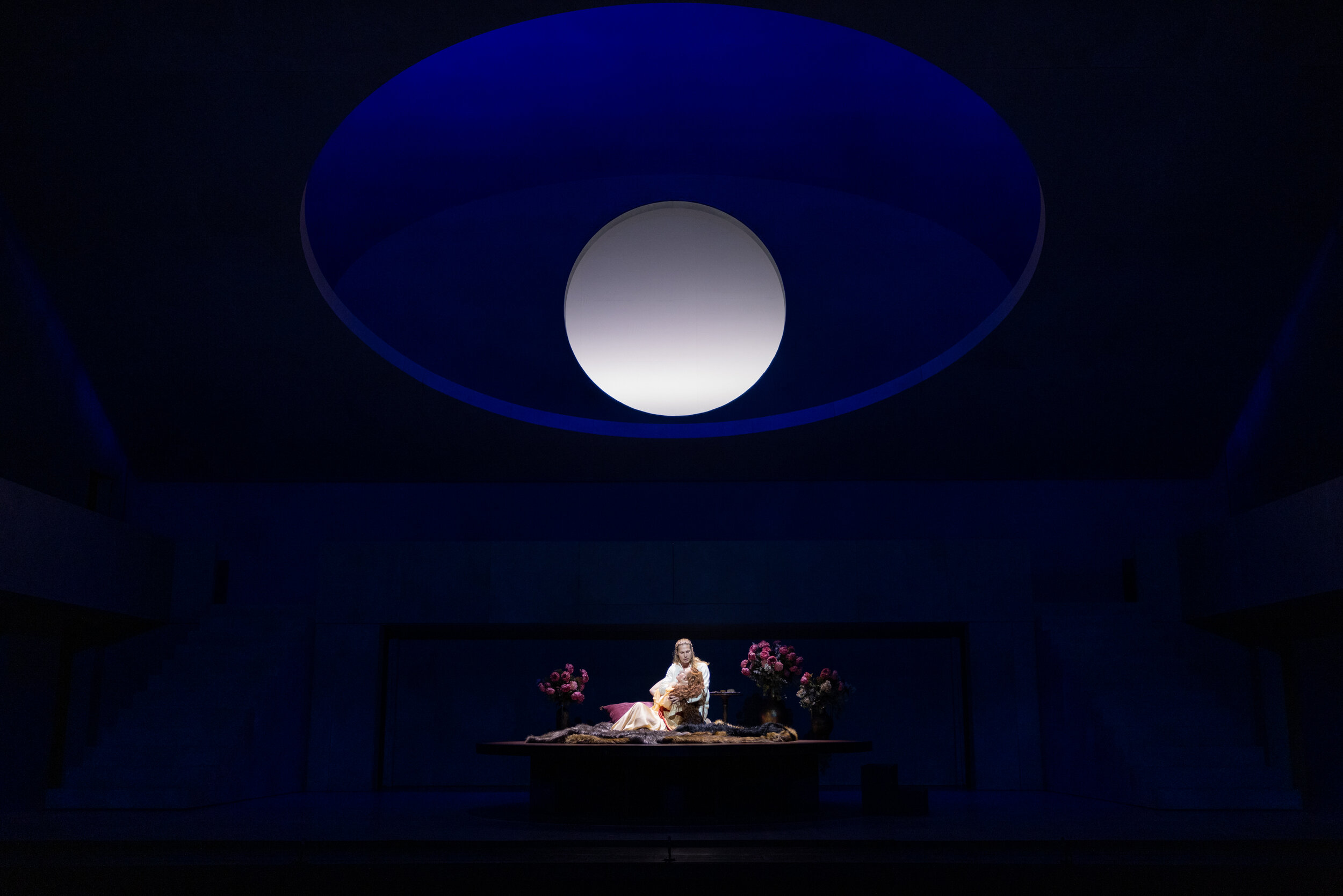
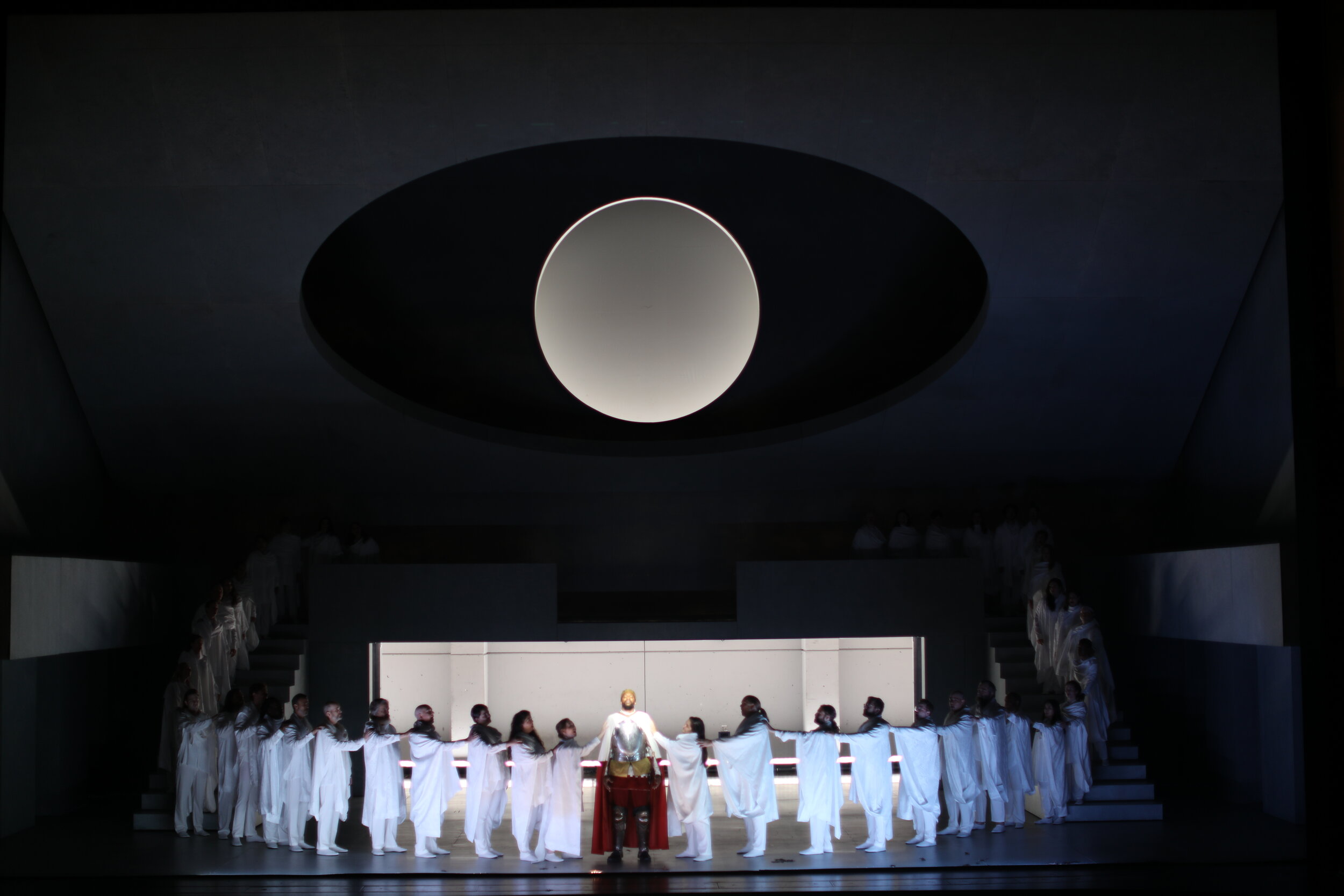
photos by Maria Barakova and Matt Saunders
“Louisa Proske, who is one of the co-founders of the revolutionary Heartbeat Opera and is headed to Opera Halle, was the perfect person to bring all of these ideas together into mesmerizing theater.
The first major choice she made was to present the world of Arthur and his knights in traditional dress. That immediately immersed the viewer in the world. It’s a bold choice, especially in an opera world where going down this route seems less and less common, but given the opera’s rarity, it definitely allowed for an air of familiarity to the unknowing viewer (likely most of the audience).
From there, her set design was minimal but full of symbolism. A platform upstage was joined by two staircases at opposite ends with the famed Round Table taking up the center of the stage. It was mirrored by a circular opening in the “ceiling” and another circle behind that which would take on different identities throughout the night (the moon during the love scene, a magical circle during Merlin’s scene, and at the very end… stay tuned).
All of these elements, which featured rather conventionally in the opening scene, full of color and lavish costuming, would slowly reveal themselves to mean so much more as the drama unfolded.
Among the unique symbolic gestures and motifs utilized throughout is the idea of stripping down. These characters, all clad with armor and jewelry, are ultimately forced to reckon with the fact that their position in society is tentative and even empty. Guinevere throws away her rings, her royal apron, and unbraids her hair as she prepares for her death. Lancelot, shamed by his defiance and ultimately cowardice, throws aside his armor as he prepares for surrender (and a bloody death). Finally, Arthur, faced with a collapsing society and his own powerlessness, is beckoned by the beyond to renounce it all and transcend. In his final act, he throws it all aside – his armor, Excalibur, and, finally, his crown – for a different kind of power. Again, this all emphasizes that beyond the facade of chivalry and royalty, etc, we are all vulnerable humans headed toward the same destination – death.
But the most potent symbol of all is the Round Table and the circle motifs that appear throughout (as if the “Ring” references weren’t already pronounced enough). Its centrality on stage and throughout the set emphasizes its corresponding importance in Arthur’s mind. As such, it remains the one constant from scene to scene, dressed as Guinevere’s bedroom in the second scene and the forest in the Second Act. As a symbol of Arthur’s society, the choice to have the table as the set for these two locations, both deeply associated with Guinevere and Lancelot’s love, expressed the fact that they were always in Arthur’s orbit and would never be able to escape it.
In the second Act, the table is buried in dead leaves, which suggests the crumbling of Arthur’s world, an idea that would be furthered in Act three, when the table is literally shattered in pieces and thrown about the stage; with a civil war raging, the hope for unity, expressed by the table, is gone.
As the pieces of the table are removed from the set, the colors that so adorned that opening scene also fade away leaving the titular character alone on an empty, dark stage. As Merlin suggests in their tête-à-tête, the world they envisioned will be no more. There is no hope for the realization of his dreams.” - David Salazar, Operawire
Le Roi Arthus (King Arthur)
by Ernest Chausson
produced by BARD SummerScape, 2021
New York Times Critic’s Pick
READ New York Times advance feature
"Superb singers and a clear production make a strong case for Ernest Chausson’s seldom heard “Le Roi Arthus." - Anthony Tommasini, The New York Times
"Louisa Proske delivers a revelatory production … the perfect person to bring all of these ideas together into mesmerizing theater." - David Salazar, Operawire
"Louisa Proske’s directing illuminated the personal interactions at the heart of the opera … The production struck an elegant balance between the human and the mythic." - Heidi Waleson, The Wall Street Journal
"… the king’s opera received royal treatment from Bard. Louisa Proske, best known for her fiercely inventive Heartbeat Opera stagings, went full-out traditional for Chausson in the very best sense. The complex character relationships were clearly delineated and she moved her large forces with pointed simplicity." - Christopher Corwin, Parterre Box
Directed by Louisa Proske
Music Directed by Leon Botstein
Movement by Zoe Scofield
Fight Direction by Thomas Schall
Designs by Matt Saunders, Kaye Voyce, Scott Zielinski, Anne Ford Coates & Anika Seitu